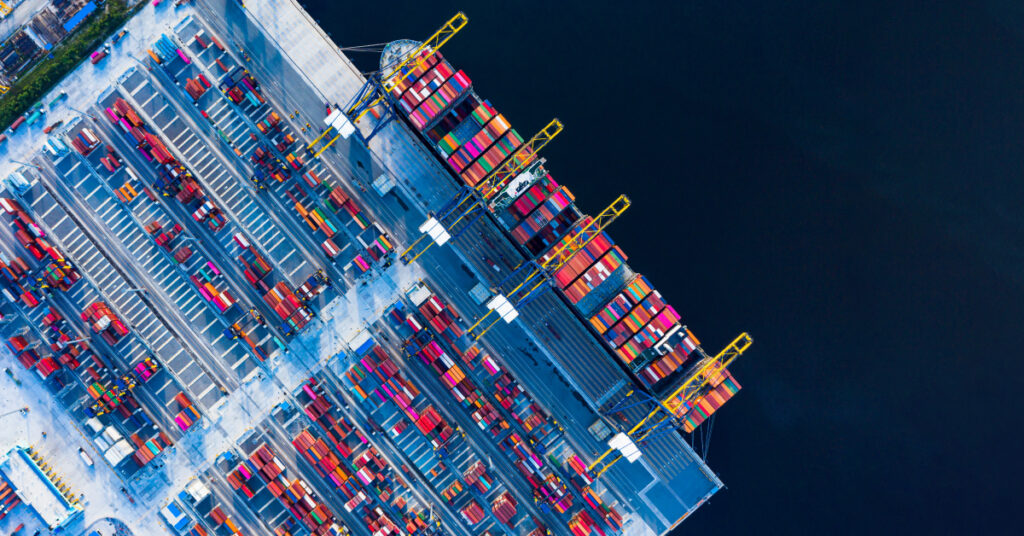Few organizations escaped the wrath of the supply chain, logistics and transportation issues that surfaced in 2020 and were exacerbated in 2021. From semiconductor chip shortages to a lack of ocean containers to extreme West Coast port congestion, it seemed like every week brought with it at least one more obstacle for companies to overcome.
As we flip the calendar over to 2022 and wave goodbye to 2021, truck driver shortages, supply chain interruptions and port congestion will likely continue as big events like the Chinese New Year celebration and Beijing Olympics impact the flow. In 2022 Crystal Ball: Assessing Current and Future Supply Chain Challenges & Opportunities, Centerboard’s President states.
“During a ‘normal’ year we’d see a surge of pre-ordering to get orders flowing in before the shutdown, to cover the inventory outage. This year, the outage itself may help clear up some of this backlog.”
“There’s no doubt that the tumultuous events of the past 18 months led to the massive disruption of many key supply chains,” Jim Witham writes in Forbes’ Supply Chain Lessons Learned From The Covid-19 Pandemic. “Although industries experienced supply chain fragility before the Covid-19 pandemic, the current scale and diversity of impact are unprecedented, with shortages in critical medical equipment, consumer electronics, cars and even lumber.”
In assessing the lessons learned and new practices put into play as a result of the pandemic, Witham writes about how vulnerability must be an everyday—not a 100-year—planning event consideration, that just-in-time (JIT) manufacturing may have finally seen its day, and how the growing number of companies that now require semiconductors have made those organizations dependent on the chip supply.
“The current automotive industry spends around $40 billion on chips per year. This will only grow with the rapid transition to electric vehicles (EVs), which require four times the number of semiconductors,” writes Witham, who also feels that the relationships between supply chain partners must evolve as a result of the pandemic. Only then can organizations begin to work toward creating a more resilient, global economy.
Driving Effective and Profitable Change
On a positive note, the global pandemic has pushed more companies to consider their own carbon footprints—and those of their business partners—and prompted a wave of concern on the part of the consumer. This, in turn, has driven a heightened awareness of how a company’s activities impact the environment and what they’re doing to create more sustainable, eco-friendly supply chains.
To help them achieve these goals, Odyssey Logistics recently introduced the Cloverleaf™ Program. Focused on driving effective and profitable change, this science-based program was developed on the belief that sustainability can be an engine for growth and economic prosperity. The program incorporates electrification, artificial intelligence (AI), analytics, Internet of Things (IoT) connectivity and other emerging technologies in ways that measurably move the world towards a carbon-neutral stance.
Cloverleaf also helps reduce costs, improve margins and better serve every organization and person along the supply chain. Odyssey, which actively participates in the SmartWay Program (USA), GreenFreight (Europe) and other government-sponsored initiatives, has made substantial investments in Cloverleaf and plans to continue doing so.
What’s Ahead?
In 4 Supply Chain and Logistics Trends to Watch in 2022, Overhaul’s Barry Conlon highlights the key supply chain and logistics challenges that companies have been grappling with over the last two years. Going forward into 2022, he expects the talent shortage, the transportation capacity crunch and mergers and acquisitions (M&A) among global shipping companies to all continue.
“Everyone is learning how to do more with less through the current driver shortage, which will continue to delay companies looking to expand their fleet or increase capacity,” Conlon writes. “Unfortunately, we won’t see relief any time soon, with nearly a quarter of the trucking workforce expected to hit retirement in the next decade.”
Looking further out, Conlon says the US infrastructure investment bill could bring some relief. Even with a positive outcome, he warns that the results will take time to surface. “There is no magic wand,” he writes, “and it’ll take time to catch up to the infrastructure we need.”
As with most things in life, patience will truly be a virtue as the pandemic pressures ease and organizations attempt to return to “normal” in 2022. Association of Supply Chain Management’s Douglas Kent told Transport Topics that addressing overall supply chain problems will take time. “We’re going to be counting it in years, not in months and certainly not weeks and days,” Kent said. “Some of the concerns about how you manage the new norms will require some strategic resolutions that are not quick fixes.”








